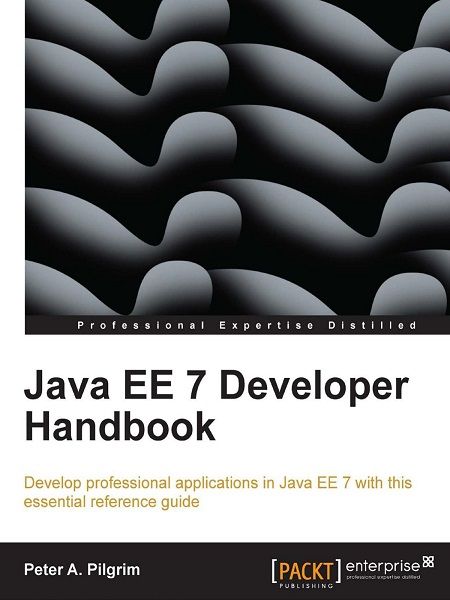Java EE 7 Developer Handbook [PDF]seeders: 34
leechers: 6
Java EE 7 Developer Handbook [PDF] (Size: 8.48 MB)
Description
Java EE7 Developer Handbook
Author: Peter A Pilgrim Published: September 20, 2013 Publisher: Packt Publishing ISBN: 9781849687942 Format: Retail PDF Reader Required: Adobe Reader, Adobe Digital Editions etc Skill Level: Experienced- assumes you have previous experience with Java Tested on the above readers with no problems. Don't hesitate to PM me if you have any questions about or problem with the download, as comments on the torrent are easy to miss. Please allow a couple seconds for the seedboxes to engage, then it should be a nice, quick download. Enjoy :D  The seventh edition of the Enterprise Java platform is aimed at helping Java engineers take advantage of the advancements in HTML5 and web standards. Web Sockets, asynchronous input and output with Servlets, and strong type safety through the CDI containers will ensure that Java EE 7 remains popular for server-side applications. If you are a user aiming to get acquainted with the Java EE 7 platform, this book is for you. "Java EE 7 Developer Handbook" provides a solid foundation of knowledge for developers to build business applications. Following the lead of Agile practices, there is a focus on writing tests to demonstrate test-driven development principles, using the embedded GlassFish 4.0 container examples and the Gradle build system. You will learn about CDI, EJB, JPA, JMS, MDB, Servlets, WebSocket, JAX-RS, Bean Validation, and so much more. "Java EE 7 Developer Handbook" is designed as a companion to the professional software developer who quickly needs to lookup some working code, understand the basics of the framework, and then go out and fulfill the business contract with the customer. Typically, engineers are under pressure to develop professional code that is of high quality and contains a low number of bugs. Java EE 7 Developer Handbook relies heavily on the Arquillian framework to illustrate how much easier it is to write Java EE tests, and together with the modern practice of writing containerless applications that actually embed an application container, developing agile Java EE suddenly becomes reasonable, smart, pragmatic, and achievable. You will start off with an overview of the Java EE platform: the containers, the design, and architecture. From there, you can follow the path of the CDI, the true gem of the framework, and then the server side end point, EJB. It is completely up to you when and if you want to learn about Java persistence. However, don’t miss out on the highlights of Java EE 7 such as WebSocket, Bean Validation, and asynchronous Servlet API. "Java EE 7 Developer Handbook" is a vertical slice through standard Java enterprise architecture. If you have been wondering why developers have invested so much time and effort into learning topics such as Enterprise Java Beans, you will quickly understand why when you find out the difference between stateful and stateless Beans. Best of all, this book covers the topic from the perspective of new API and new modern practices. For instance, you, the developer and designer, are expected to write applications with annotations in comparison with J2EE. Java EE 7 Developer Handbook incorporates helpful hints and tips to get the developer up to speed in a short amount of time on EJB, CDI, Persistence, Servlet, JMS, WebSocket, JAX-RS and Bean Validation, and much more. "Java EE 7 Developer Handbook" is the reference guide you need beside you at your desk.  Related Torrents
Sharing Widget |
All Comments